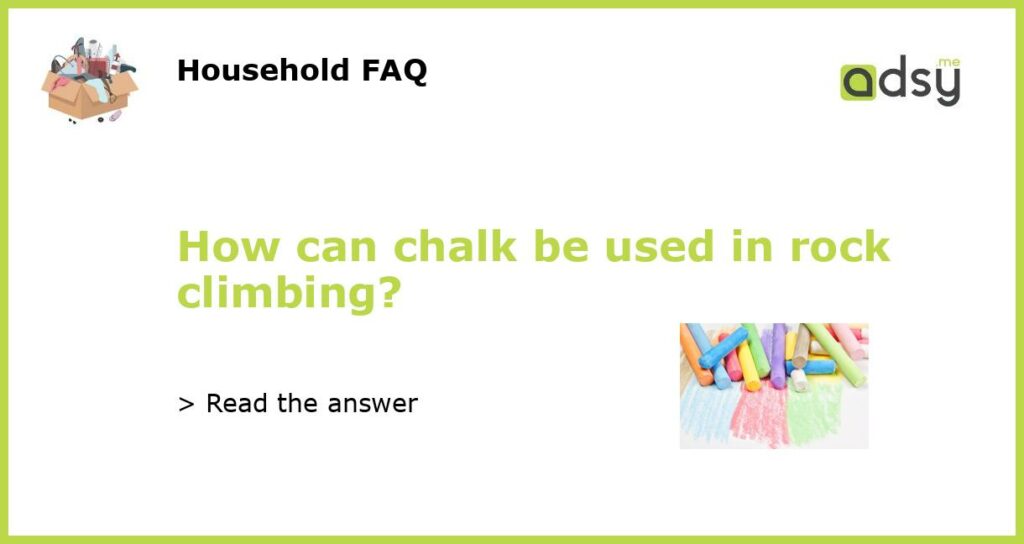What is chalk and why is it important in rock climbing?
Chalk is a powdery substance that is used in rock climbing to keep climbers’ hands dry and improve grip on holds. The material is composed of magnesium carbonate, a compound that creates a drying effect on the skin when applied. This is important in rock climbing because sweaty hands can cause slipping on holds, which is dangerous and could lead to falls. Additionally, chalk helps to prevent blisters and calluses on climbers’ hands, making it a vital tool in the sport.
How is chalk applied in rock climbing?
Chalk is typically stored in a small bag, called a chalk bag, that climbers hang from their harness. To apply the chalk, climbers will reach into the bag and rub their hands together, distributing the powder evenly across their palms and fingers. Some climbers may also choose to use a chalk ball, which is a mesh bag filled with loose chalk that can be squeezed to release chalk onto the hands. It’s important to note that while chalk can be helpful, overuse can damage the rock and create an eyesore in natural climbing environments.
What are the different types of chalk used in rock climbing?
There are two main types of chalk used in rock climbing: block chalk and loose chalk. Block chalk is compressed chalk that has been formed into a solid block, which can be broken into smaller pieces for use in a chalk bag. Loose chalk, on the other hand, is unpressed and finer in texture, making it easier to apply either in a chalk bag or using a chalk ball. Climbers may also use liquid chalk, which is a mixture of chalk and alcohol that dries more quickly and can be longer lasting. However, liquid chalk is often banned in climbing gyms due to its messiness and potential for damaging equipment.
What are some brands of chalk used in rock climbing?
There are many brands of chalk used in rock climbing, including Black Diamond, Metolius, Mammut, and Petzl. Some brands offer different types of chalk such as eco-friendly, dustless, or drying agents added. Climbers may also choose generic or store brand chalk, as long as it is magnesium carbonate and labeled for climbing use. It’s important to note that while different brands may offer specific benefits or preferences, ultimately the effectiveness of chalk will depend on the individual climber’s needs and preferences.
Does chalk have any negative effects on the environment?
While chalk itself is a natural substance, its use in the environment can have negative effects. Overuse of chalk in a climbing area can create an eyesore and damage the rock, which can be especially harmful in natural climbing environments. Additionally, loose chalk can become airborne and create respiratory problems, especially for those with asthma or other breathing conditions. To combat these negative effects, climbers are encouraged to use chalk responsibly, cleaning up excess chalk and using it sparingly to minimize the impact on the environment.






